Imagine living in a home where every breath you take is fresh, clean, and free of allergens. Sounds like a dream, right? But what if we told you it’s possible with the help of a simple device called an air scrubber?
In a world where indoor air pollution is a growing concern, understanding and investing in air scrubbers can be a game-changer for your health and comfort.
Key Takeaways
- Air scrubbers are crucial devices for improving indoor air quality by removing pollutants, allergens, and microorganisms.
- There are three main types of air scrubbers: Dry Scrubbers, Wet Scrubbers, and Thermal Oxidizers, each with its own advantages and ideal use cases.
- The effectiveness of air scrubbers can vary, but they generally offer significant benefits in terms of health and comfort.
- Air scrubbers can be integrated with existing HVAC systems for whole-house air purification.
- Choosing the right air scrubber involves considering factors like the specific air quality issues you’re facing, the size of your space, and the maintenance requirements.
- Regular maintenance of air scrubbers is essential for their optimal operation and longevity.
- Air scrubbers can have a positive environmental impact by reducing the amount of pollutants released into the atmosphere.
Table of Contents
- Key Takeaways
- What is an Air Scrubber?
- Types of Air Scrubbers
- Applications of Air Scrubbers in Residential and Commercial Properties
- Who Uses Air Scrubbers: Focus on Commercial Uses
- How Does an Air Scrubber Work?
- Benefits of Using an Air Scrubber
- Air Scrubbers and HVAC Systems
- Choosing the Right Air Scrubber
- Maintenance and Care for Air Scrubbers
- Air Scrubbers and Environmental Impact
- FAQ
- Conclusion
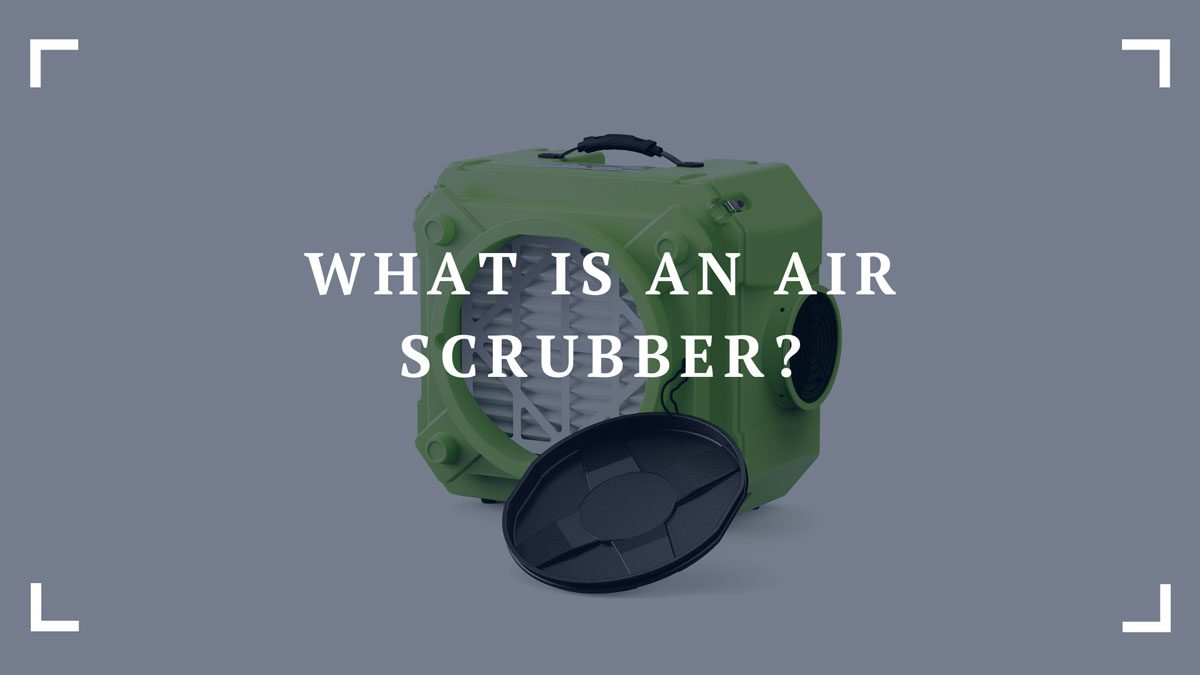
Introducing Air Scrubbers: The Ultimate Solution
Now, you might be wondering, “How can I improve the air quality in my space?” Well, that’s where air scrubbers come in. These handy devices are designed to remove particles, gases, and even chemicals from the air, helping to create a healthier and more comfortable environment. But what exactly is an air scrubber, and how does it work? Let’s dive in and find out!
What is an Air Scrubber?
Definition and Basic Function
An air scrubber is a device that removes pollutants from the air within a given area. These pollutants can include particles like dust and pollen, gases such as carbon monoxide and sulfur dioxide, and volatile organic compounds (VOCs) that can off-gas from household products. By filtering out these contaminants, air scrubbers help to improve indoor air quality, making your space a healthier place to live or work.
The Science Behind Air Scrubbers
So, how does an air scrubber do its job? The answer lies in a process called “adsorption.” When air passes through the air scrubber, pollutants in the air are attracted to a filter material within the device. These pollutants stick to the filter, allowing the cleaned air to pass through and circulate back into the room.
Air scrubbers are often used in conjunction with HVAC systems, providing a continuous air purification solution. They can be particularly beneficial in environments where air quality is a concern, such as homes with allergy sufferers, workplaces with chemical exposure, or areas with poor outdoor air quality.
In our Air Scrubber Calculator article, we’ve discussed how you can calculate the cost of installing and running an air scrubber in your home. But for now, let’s focus on understanding these devices better and how they can benefit you.
Types of Air Scrubbers
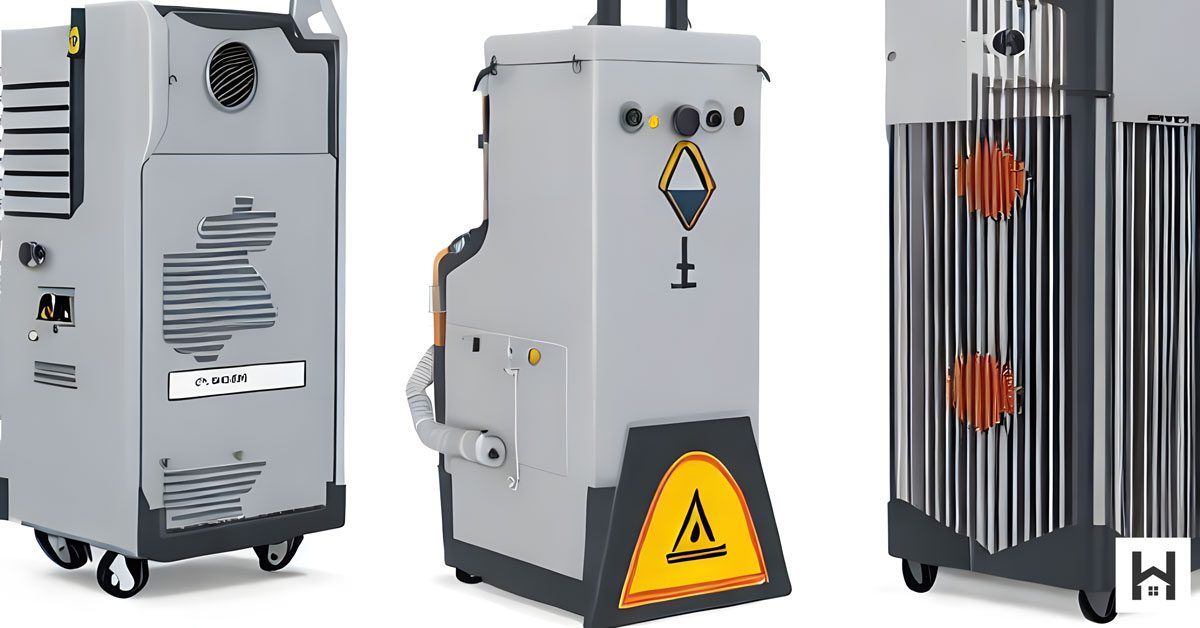
Air scrubbers come in various types, each designed to handle specific kinds of pollutants and applications. Let’s take a look at some of the most common types.
Dry Scrubbers: An Overview
Dry scrubbers, also known as dry sorbent injectors (DSIs), use a specific type of cleaning process. They inject a dry reagent or slurry into a dirty exhaust stream to “scrub out” the pollutants. These scrubbers are particularly effective at removing acidic gases that contribute to environmental acid rain.
Wet Scrubbers: An Overview
Wet scrubbers, on the other hand, use a scrubbing solution to remove harmful substances from gases. This process involves intimate contact between the scrubbing solution and polluted gas stream, effectively washing the pollutants out of the gas flow. Wet scrubbers are versatile and efficient, capable of removing both gases and particulate matter.
Thermal Oxidizers: An Overview
Thermal oxidizers are a bit different. They use high temperatures to convert hazardous gases into less harmful substances like carbon dioxide and water vapor through the process of combustion. These are often used in industrial applications where harmful gases are a byproduct of the manufacturing process.
Understanding the Best Type for Your Needs
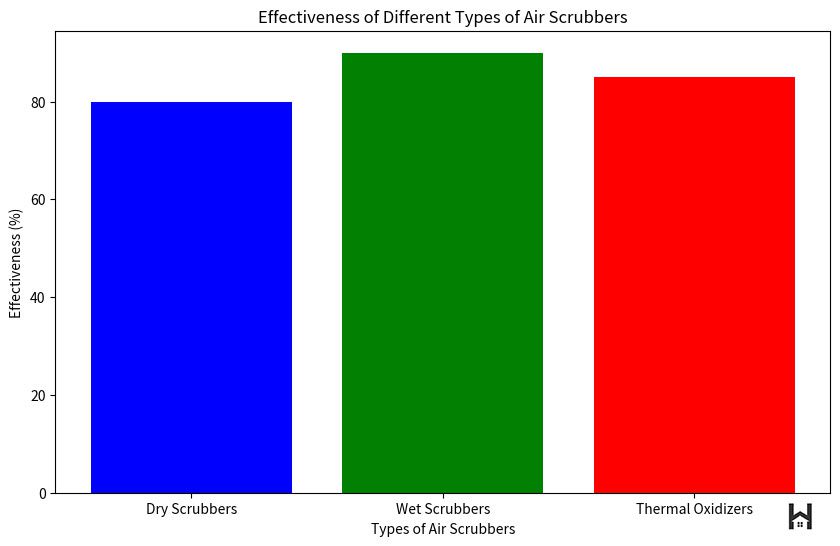
Choosing the right type of air scrubber depends on your specific needs. If you’re dealing with a lot of particulate matter or dust, a dry scrubber might be your best bet. If you’re looking to remove both gases and particles, a wet scrubber could be the way to go. And if you’re in an industrial setting dealing with hazardous gases, a thermal oxidizer might be what you need. Always consider your specific air quality issues, the size of your space, and any specific health concerns when choosing an air scrubber.
Applications of Air Scrubbers in Residential and Commercial Properties
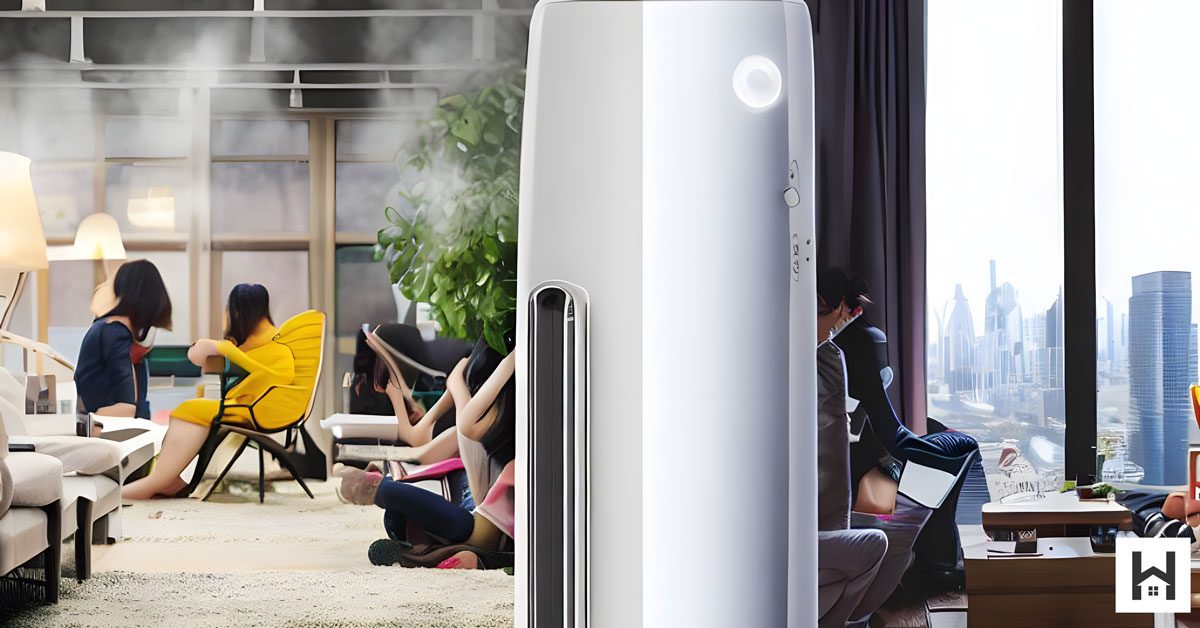
Air scrubbers aren’t just for industrial use – they can also be incredibly beneficial in residential and commercial properties. Let’s explore some of the key applications.
Residential Uses of Air Scrubbers
- Homes with Allergy Sufferers: If someone in your home suffers from allergies, an air scrubber can help to reduce their symptoms by removing allergens from the air.
- Homes with Pets: Pets can bring joy to our lives, but they can also bring dander and odors. An air scrubber can help to keep your home smelling fresh and free of pet-related allergens.
- Homes in Urban Areas: If you live in a busy urban area, your indoor air may be polluted with dust, gases, and other pollutants from outside. An air scrubber can help to filter out these pollutants and improve your indoor air quality.
Commercial Uses of Air Scrubbers
- Offices: Offices can be a hotbed of pollutants, from dust and allergens to gases from office equipment. An air scrubber can help to create a healthier working environment for your employees.
- Restaurants: In restaurants, air scrubbers can help to remove odors and smoke from the kitchen, creating a more pleasant dining environment for customers.
- Healthcare Facilities: In healthcare facilities, air scrubbers can help to prevent the spread of airborne diseases and create a healthier environment for patients and staff.
- Gyms and Fitness Centers: Gyms can be full of odors and airborne bacteria. An air scrubber can help to keep the air clean and fresh, creating a more pleasant environment for your members.
Whether you’re a homeowner looking to improve your indoor air quality, or a business owner looking to create a healthier environment for your employees or customers, an air scrubber can be a valuable investment.
Who Uses Air Scrubbers: Focus on Commercial Uses
Air scrubbers are not just limited to residential use. They are extensively used in various commercial and industrial settings for maintaining a clean, healthy, and safe environment. Let’s explore some of the key sectors that leverage the power of air scrubbers.
Healthcare Facilities
Hospitals, clinics, and other healthcare facilities prioritize maintaining a sterile environment to prevent the spread of diseases. Air scrubbers help filter out harmful pathogens and contaminants, ensuring clean and safe air for patients and healthcare workers.
Manufacturing Plants
In manufacturing plants, especially those dealing with chemicals, air scrubbers are crucial for removing harmful particles and gases that could be detrimental to workers’ health and the environment.
Construction Sites
Construction sites often generate a lot of dust and debris. Air scrubbers help maintain air quality by filtering out these particles, protecting workers’ health and ensuring compliance with environmental regulations.
Food and Beverage Industry
In the food and beverage industry, air scrubbers help remove odors and control the quality of air, ensuring a clean and pleasant environment for both workers and customers.
Schools and Educational Institutions
Air scrubbers in schools and educational institutions ensure a healthy learning environment by improving indoor air quality, reducing allergens, and preventing the spread of airborne diseases.
Office Buildings
In office buildings, air scrubbers contribute to a healthier and more productive work environment by improving air quality, reducing sickness, and enhancing overall employee well-being.
Mold Remediation Services
Mold remediation is a critical process that involves the removal and cleaning of mold from an indoor environment. During this process, mold spores can become airborne and spread, potentially leading to health issues and further contamination. Air scrubbers are an essential tool for mold remediators. They help capture these airborne spores to prevent their spread, effectively containing the mold problem while protecting the health of the remediation team and building occupants.
How Does an Air Scrubber Work?
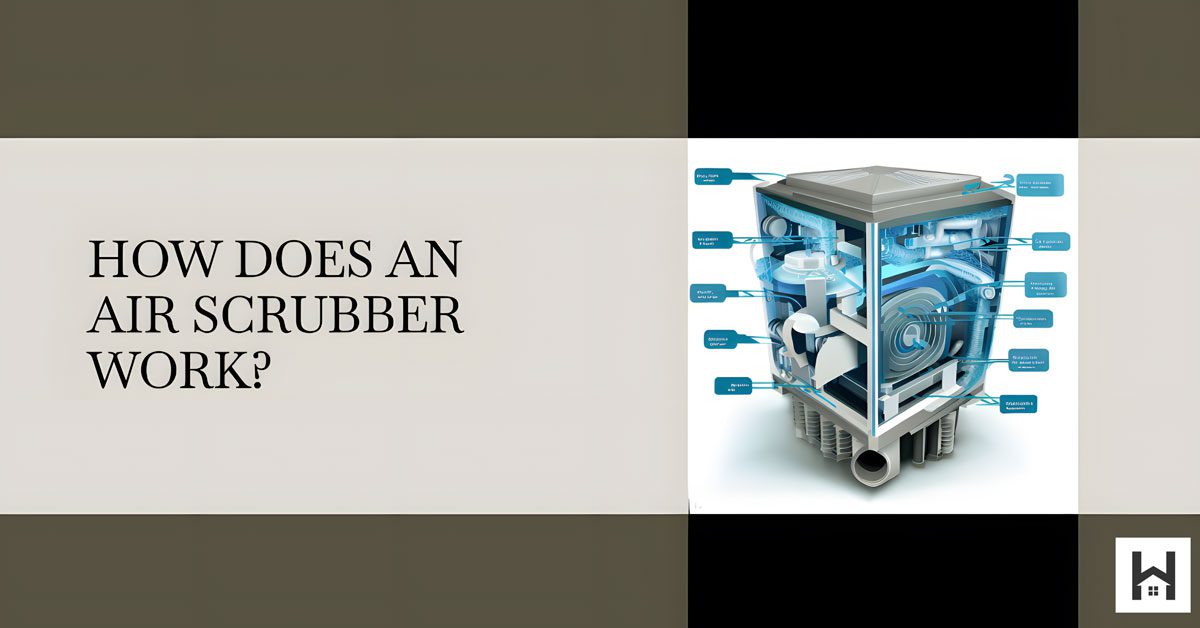
Now that we’ve covered the types of air scrubbers, let’s delve into how they work.
The Process of Air Scrubbing: A Step-by-Step Guide
- Air Intake: The process begins when air is drawn into the air scrubber. This is usually done with a fan or through the natural airflow of your HVAC system.
- Filtration: As the air moves through the scrubber, it passes through a series of filters. These filters are designed to capture different types of pollutants. Some might trap larger particles like dust and pollen, while others are designed to attract and hold smaller particles or gases.
- Purification: Some air scrubbers also include a purification stage. This might involve using UV light to kill bacteria and viruses, or a chemical process to neutralize harmful gases.
- Air Release: Once the air has been cleaned, it’s released back into your space. The result is cleaner, healthier air for you to breathe.
Key Components of an Air Scrubber
Air scrubbers may vary in design and complexity, but most will include the following key components:
- Intake Fan: Draws air into the unit.
- Filters: Capture and hold pollutants. These may need to be replaced periodically to maintain the effectiveness of the scrubber.
- Purification System: This could include UV lights or a chemical process to further clean the air.
- Exhaust System: Allows the cleaned air to be released back into your space.
Benefits of Using an Air Scrubber
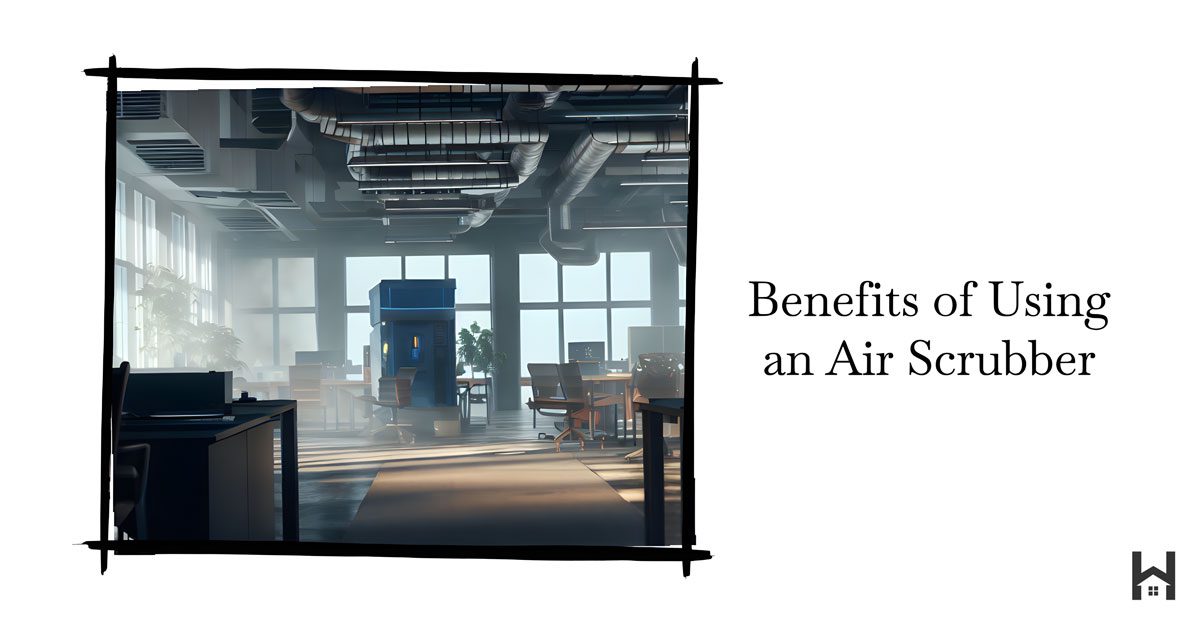
Air scrubbers can bring a host of benefits to your indoor environment. Let’s explore some of the key advantages.
Improving Indoor Air Quality
First and foremost, air scrubbers are designed to improve indoor air quality. By removing pollutants like dust, pollen, and gases, they help to create a cleaner, fresher environment. This can be particularly beneficial in spaces where air quality is a concern, such as homes in busy urban areas or workplaces with a lot of dust or chemical exposure.
Reducing Allergens and Irritants
If you or someone in your home suffers from allergies, an air scrubber can be a game-changer. By filtering out allergens like pollen, dust mites, and pet dander, it can help to reduce allergy symptoms and create a more comfortable living environment.
Eliminating Unpleasant Odors
Air scrubbers don’t just clean the air – they can also help to eliminate unpleasant odors. Whether it’s the smell of last night’s dinner, pet odors, or that musty smell in the basement, an air scrubber can help to keep your home smelling fresh and clean.
Protecting Your Health
Perhaps most importantly, air scrubbers can help to protect your health. By removing harmful pollutants from the air, they can reduce your exposure to substances that could potentially cause health problems. This includes everything from allergens that can trigger asthma attacks to volatile organic compounds that can cause headaches and other symptoms.
Air Scrubbers and HVAC Systems
Air scrubbers can be a valuable addition to your HVAC system, providing continuous air purification to complement your heating and cooling.
How Air Scrubbers Complement HVAC Systems
While your HVAC system is great at controlling temperature and humidity levels, it’s not designed to handle pollutants like dust, allergens, and gases. That’s where an air scrubber comes in. By working in conjunction with your HVAC system, it can help to filter out these pollutants, improving the overall air quality in your home.
Installation Process: What to Expect
Installing an air scrubber is a relatively straightforward process, but it’s best left to the professionals. The unit is typically installed in the ductwork of your HVAC system, where it can clean the air as it circulates through your home. The installation process usually takes a few hours and should cause minimal disruption to your home.
Choosing the Right Air Scrubber
With various types and brands of air scrubbers on the market, choosing the right one for your needs can seem daunting. But don’t worry – we’re here to help!
| Air Scrubber Type | Ideal Use Case | Maintenance Requirement | Noise Level |
|---|---|---|---|
| Dry Scrubbers | Ideal for environments with dry pollutants. | Low: Requires periodic filter changes. | Low to Moderate |
| Wet Scrubbers | Best for environments with gaseous pollutants. | High: Requires regular cleaning and waste disposal. | Moderate to High |
| Thermal Oxidizers | Perfect for industrial applications with high-temperature processes. | Moderate: Requires regular inspection and part replacement. | High |
Factors to Consider When Buying an Air Scrubber
- Type of Pollutants: Consider the types of pollutants you need to remove. If you’re dealing with dust and allergens, a dry scrubber might be sufficient. But if you’re also dealing with gases and odors, you might need a wet scrubber or a scrubber with a purification stage.
- Size of Your Space: The size of your space will also influence the type of air scrubber you need. Larger spaces may require a larger or more powerful unit.
- Maintenance Requirements: Some air scrubbers require more maintenance than others. Consider how often you’ll need to replace filters and whether you’re comfortable doing this yourself.
- Cost: Finally, consider your budget. Air scrubbers can range in price, so it’s important to find a unit that fits your budget but still meets your air quality needs.
Top Brands to Consider
There are several reputable brands that manufacture air scrubbers. Some of the top brands to consider include:
- Aerus: Known for their ActivePure Technology, Aerus air scrubbers are designed to eliminate air and surface contaminants.
- BlueDri: BlueDri offers a range of air scrubbers and dehumidifiers designed for restoration projects.
- Honeywell: A well-known brand in the air purification industry, Honeywell offers air scrubbers as part of their broader range of air quality solutions.
Maintenance and Care for Air Scrubbers
Like any device, air scrubbers require regular maintenance to keep them working effectively.
Routine Maintenance Tips
- Filter Replacement: The filters in your air scrubber will need to be replaced periodically. Check the manufacturer’s guidelines for how often this should be done.
- Cleaning: Depending on the type of air scrubber, you may also need to clean certain parts of the unit. Again, check the manufacturer’s guidelines for instructions.
- Inspection: Regularly inspect your air scrubber for any signs of damage or wear and tear. If you notice anything unusual, it’s best to get it checked out by a professional.
Troubleshooting Common Issues
If your air scrubber isn’t working as effectively as it should, there are a few things you can check:
- Filters: If the filters are dirty or clogged, they won’t be able to effectively remove pollutants from the air. Check your filters and replace them if necessary.
- Air Flow: If the air flow through your scrubber is restricted, it won’t be able to clean the air effectively. Check for any blockages or obstructions and remove them if necessary.
- Settings: Make sure your air scrubber is set to the correct settings for your needs. If it’s set too low, it may not be able to keep up with the amount of pollutants in your air.
Remember, if you’re ever in doubt, it’s best to consult with a professional. They can help to diagnose and fix any issues with your air scrubber.
Air Scrubbers and Environmental Impact
Air scrubbers aren’t just good for your health – they can also have a positive impact on the environment.
Understanding the Eco-Friendly Benefits
Air scrubbers help to reduce the amount of pollutants that are released into the environment. By filtering out harmful substances like dust, gases, and allergens, they help to improve the overall air quality both inside and outside your home.
Moreover, some air scrubbers are designed to be energy-efficient, using less electricity than other types of air purifiers. This can help to reduce your carbon footprint and contribute to a more sustainable future.
Addressing Common Environmental Concerns
Some people have raised concerns about the environmental impact of air scrubbers, particularly in relation to the disposal of used filters. While it’s true that filters can contribute to waste, many manufacturers are now offering recyclable or biodegradable filters to help mitigate this issue.
Furthermore, the environmental benefits of improved air quality and reduced pollutant emissions can often outweigh the potential negatives. By choosing an eco-friendly model and following the manufacturer’s guidelines for filter disposal, you can ensure that your air scrubber is as green as possible.
FAQ
Can air scrubbers remove viruses and bacteria?
Yes, certain types of air scrubbers are designed to remove not just dust and allergens, but also microorganisms like bacteria and viruses. This can be particularly beneficial in healthcare settings or during flu season.
Can I install an air scrubber myself, or do I need a professional?
While it’s possible to install an air scrubber yourself if you’re handy, it’s often recommended to have a professional do the installation. This ensures that the air scrubber is installed correctly and functioning at its best.
Are air scrubbers noisy?
The noise level of an air scrubber can depend on the specific model and setting. Some air scrubbers are designed to be very quiet, while others may produce a low level of noise. If noise is a concern for you, look for models that are specifically marketed as being quiet or low-noise.
Can I use an air scrubber if I have a central air conditioning system?
Yes, air scrubbers can be used with most central air conditioning systems. In fact, some air scrubbers are designed to be installed directly into your existing HVAC system, allowing them to clean the air throughout your entire home or business.
Conclusion
Air scrubbers play a crucial role in maintaining a healthy indoor environment. By removing pollutants from the air, they can help to improve air quality, reduce allergy symptoms, eliminate odors, and even protect your health. Whether you’re dealing with dust, allergens, or gases, an air scrubber can provide a solution.
As an interior designer, I’m always looking for ways to create healthier, more comfortable living spaces. And in my experience, air scrubbers are one of the most effective tools for achieving this. They’re a worthwhile investment for anyone who cares about their indoor air quality and overall health.
Remember, choosing the right air scrubber for your needs is key. Consider the types of pollutants you need to remove, the size of your space, and your budget. And don’t forget about maintenance – a well-maintained air scrubber will serve you well for many years to come.


